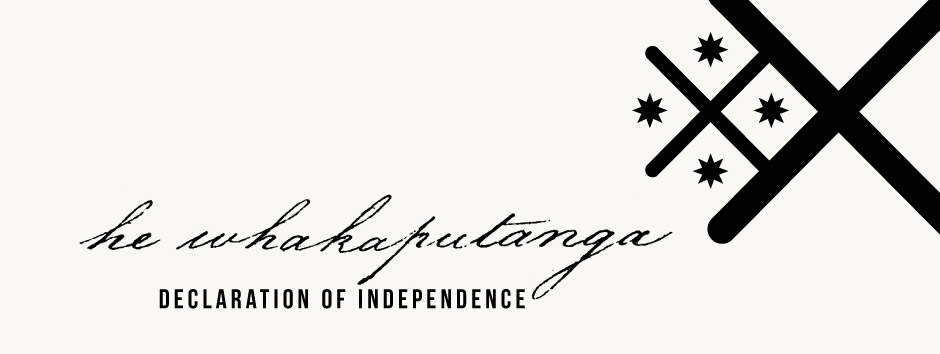Signing details
Te Kēmara, also known as Kai Te Kēmara, Tāreha and Kaiteke, was the son of Whē and the uncle of Hōne Heke Pōkai and Marupō. He was a renowned tohunga and rangatira of Waitangi, Pākaraka and Pouērua. One of Te Kēmara’s wives was Te Tii Puātea, the niece of Ngare Raumati leader Korokoro.
In the 1820s Te Kēmara joined Ngāpuhi’s northern alliance in wars to the south of the Bay of Islands, where his knowledge as a tohunga was highly respected. Hongi Hika relied on his visions, such as his waiata matakite (prophetic song) that foretold the defeat of Ngāti Whātua at the battle of Te Ika-a Ranganui in 1825. Te Kēmara was also said to have battled Tūhotu, a tohunga of Te Arawa, for control over the waters of Lake Rotorua. Tūhotu called on the taniwha of the lake to make the waters rough, preventing Hongi’s waka from crossing. Te Kēmara replied with his own karakia and managed to calm the waters.
In the 1830s Te Kēmara opposed Christianity and supported the prophet Papahurihia, also known as Te Atua Wera, and the Nākahi movement against missionaries. He had a stormy relationship with Henry Williams and disputed the sale of land in the Waitangi area.
Te Kēmara signed He Whakaputanga on 28 October 1835. In its honour he gifted land near the current Te Tiriti o Waitangi marae at Waitangi for a whare, Te Taurangatira (the meeting place of great leaders). According to Te Kēmara’s descendant Emma Gibbs-Smith, visiting rangatira may have signed He Whakaputanga at this site.
Claudia Orange notes that 'as senior chief and tohunga of the Waitangi locality, the elderly Te Kemara was assigned first right of speech' at the Treaty hui of 5 February 1840. [1] He spoke energetically against signing, and as the final speaker of the day questioned whether Māori would become slaves, joining his hands together as if in handcuffs. Despite this, he signed the Waitangi sheet on 6 February 1840.
In his later years, Te Kēmara was concerned at the denial of access to traditional fishing sites and resources. He died around 1859.
[1] Claudia Orange, The Treaty of Waitangi (first published 1987), rev. ed., Bridget Williams Books, Wellington, 2011, p.53.


Community contributions